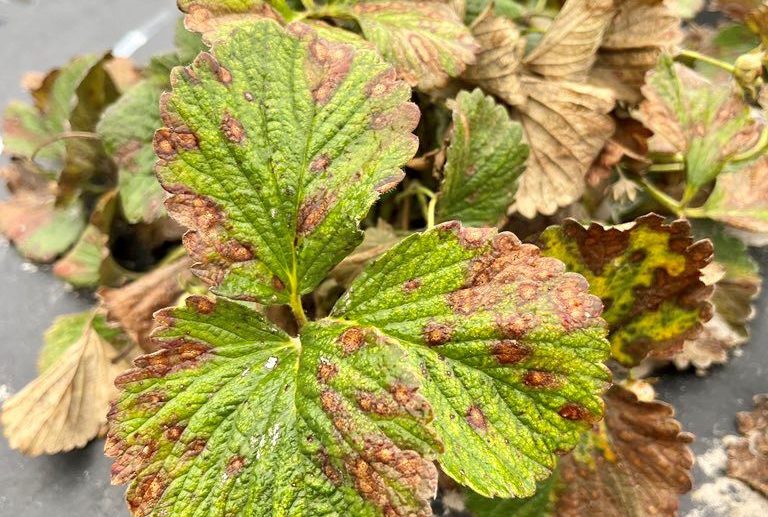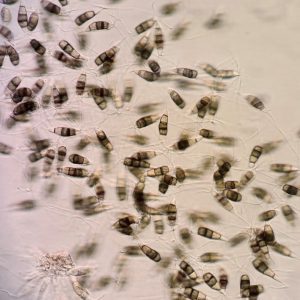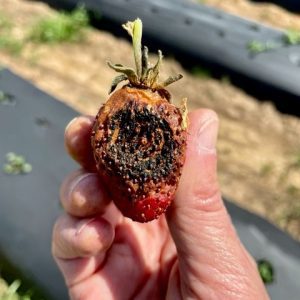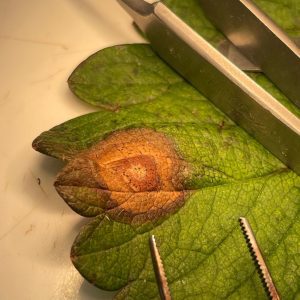Crop Production

In 2023, Neopestalotiopsis leaf spot and fruit rot have been detected in two Alabama counties so far. The fungal disease was observed on leaves at strawberry farms in Baldwin and Chilton counties during the first two weeks of April. Neopestalotiopsis is a relatively new disease to Alabama, being first reported in 2022. The disease was found in four counties in Alabama last year, but yield loss from the pathogen was negligible.
The disease was first observed in Florida in 2019 and has since spread to other Southeastern states. Neopestalotiopsis can cause severe yield loss and has the potential to destroy entire fields. The common link among past outbreaks was the nursery sources from which transplants originated. The pathogen can spread quickly across a planting and to other fields by wind, rain, irrigation, farm equipment, and field workers during harvesting and cleaning operations. Disease development is favored by consecutive or extended rain events and temperatures above 50°F. Leaf wetness plays a major role in disease progress, as dry conditions seem to inhibit or reduce spread of the pathogen.
Symptoms
Neopestalotiopsis causes leaf and fruit spots initially, and it eventually infects roots and crowns, causing the plant to wilt and die. Leaf spots can be tan-to-dark brown, various sizes, and irregularly distributed on infected leaves. Black fruiting bodies, similar to grains of pepper, become visible within the lesion under moist, humid conditions and are visible with a hand lens.
Fruit rot begins as lesions that are dry, light-tan, slightly sunken, and irregularly shaped. These lesions expand and may take over the entire fruit. Large lesions are eventually covered by dark fungal fruiting bodies.
Infected roots are often darkened and crowns develop an orange-brown necrosis. Degradation of the below-ground portion of the plant contributes to stunting or poor establishment after transplanting. Whole-plant symptoms can be confused with Phytophthora root rot and anthracnose crown rot.
Because the disease can be confused with other strawberry diseases, Alabama Cooperative Extension System professionals recommend weekly scouting for the disease and, when necessary, submitting samples to the Auburn University Plant Diagnostic Lab for proper identification.
- Neopestalotiopsis Spores
- Neopestalotiopsis Fruit Rot
- Neopestalotiopsis Lesions on Leaves
Disease Control
The disease is difficult to control once introduced into a field because it can survive from year to year on weed hosts. All commercially grown cultivars are susceptible to the disease, although there are differences in disease severity between cultivars. Purchasing disease-free transplants is the best way to avoid disease introduction. Transplants should also be inspected for symptoms of the disease.
If the disease is found in a field, limit field operations when plants are wet to avoid spreading the pathogen. Remove infected plants if it is practical. It is also important to clean and disinfect equipment between fields. To date, Switch and thiram products are the only fungicides that provide suppression of this disease against fruit rot.
More Information
Read more information about Neopestalotiopsis in the following content from the University of Florida:




